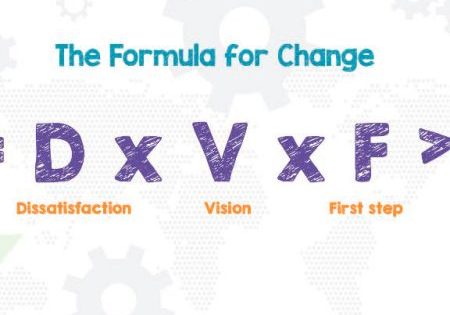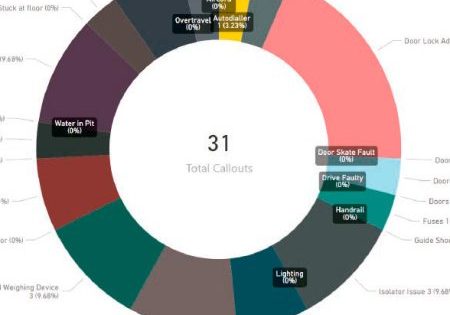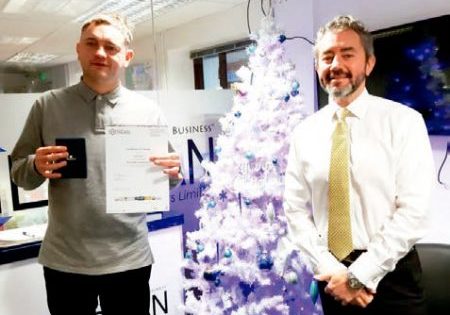Training and education are the focus of this edition of Elevator World UK, so I thought I would take the time in the safety column to talk about a course available to us all via LEIA and IOSH. LEIA, of course, are the trade association for the contracting side of the industry, and, if you aren’t aware, they run some wonderful modular courses, which were the stepping stones for me becoming more academic in later years.
This link will take you directly to the page containing all the information you need: www.leia.co.uk/education-and-training/ leia-distance-learning-course/. I have included the link because if you Google “LEIA training courses,” you end up on a page about Star Wars, the movie! Anyway, to the point. I am going to concentrate on one of the modules that is on offer, “IOSH MANAGING SAFELY FOR LEIA.” How often am I writing about an accident or something stupid that I have seen in our industry? Maybe a little too often for everyone’s liking. COVID lockdowns and restrictions are affecting us all, but if you are looking for something to fill the time that you would normally spend socialising, this course is a great gap filler. Not only will it make you think about safety in a different way, but it will also give you a certificate from LEIA and IOSH if you pass successfully.
If you aren’t aware of the acronym IOSH, it stands for The Institution of Occupational Safety and Health, and if you haven’t heard of LEIA (Lift and Escalator Industry Association), you should get yourself up to speed, as they are the trade association that was formed in 1997 as a merger of the BLA
(British Lift Association) and NALM (National Association of Lift Makers). I digress again! Even if you aren’t looking for a substitute for the pub or restaurant, this course is for you. Before someone says, “That’s easy to say,” I took the course in 2020 and thoroughly enjoyed it. It will even be useful to you if you leave the industry.
The course looks at risks and hazards in a generic way that you may not have thought of before. We, in our industry, know (or should know) how to get on top of a lift or in a lift pit safely, but do you know how to define a hazard versus a risk? Do you know terms such as likelihood and consequence?
The course also takes you through the risk assessment process and risk-rating systems.
Sadly, it is my experience that many risk assessments and method statements never reach the coalface. It’s rather like BS7255 “Safe working on lifts;” I am amazed when I ask people onsite about it, and a large number say they’ve never heard of it. It was written for the coalface and needs to reach there. (As an aside, BS7255 is under review at the moment, so look for the new version when it comes out. But, if you haven’t got a copy of the 2012 edition, put it on your to-do list.)
The course covers understanding responsibilities, and this is a huge subject that, sadly, some people only learn when they receive a tap on the shoulder from an enforcement authority or even worse − end up in the witness box in a criminal court. Responsibilities don’t just start and finish at company directors. We ALL have responsibilities for our actions; they affect not only us, but others who come in contact with our work.
A scenario: a maintenance operative may, without thinking, leave their tool bag on a landing in a nursing home whilst they explain to the manager what is wrong with their lift. Meanwhile, one of the residents trips over the tool bag and sustains injuries that make them a paraplegic. (Don’t think I am exaggerating, as this has happened before.) Where does the responsibility lie? Even worse – and this has happened as well – a maintenance operative opens the bottom floor doors of a lift, properly blocks it and gets into the pit to sweep it out. (That’s not the bit you are supposed to be surprised by.) Then, a partially sighted resident falls into the pit on top of them because a barrier wasn’t used. It’s not only what you do that is important, but it is also what you fail to do (omissions) that matter. I can take you back through the previous 105 columns I have written for this magazine that covered accidents all the way back to 1994 (when I had hair and was a few stone lighter) that were intended to educate the industry.
This takes me neatly onto module six of the course, which covers investigating incidents and how important it is to learn from them. Someone once said, “If you do the same thing over and over again and the outcome is the same and you are surprised, then you are foolish.” How true that is. Why not learn from an incident? This module tells you how to investigate incidents properly and learn from them.
This takes me onto the final module (number seven), where measuring performance vered. It is really important to know the essential principles for good health and safety performance, which are strong and active leadership from the top, worker involvement, and assessment and review.
The course is a distance-learning one, which means you can do it in your own time at home or work. It’s a stocking filler to do whilst you are waiting for that overdue supplier delivery, now that the cafés are all closed! I jest (before the suppliers all gang up on me). It’s a course well worth doing and very reasonably priced. Hard copy materials include industry-related content, and a new LEIA Site Safety Handbook.
Finally, here’s proof that I completed the course, in case you were wondering.
Get more of Elevator World. Sign up for our free e-newsletter.







